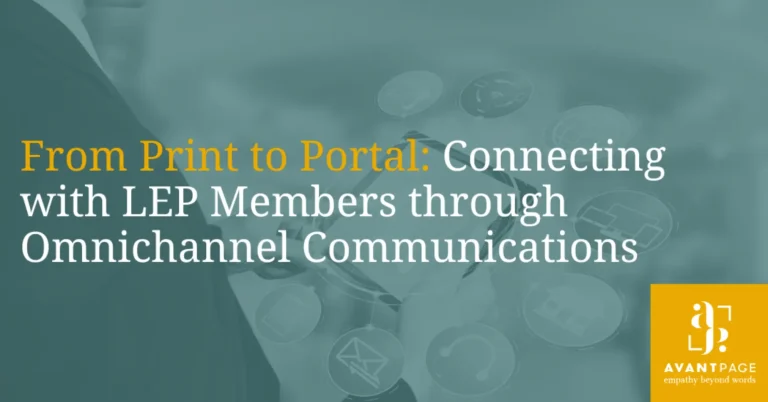AI vs. Human Translation: A Roadmap for Your Translation Project
Since the launch of ChatGPT in November 2022, generative artificial intelligence (AI) has become a game-changer across industries, from government and education to commercial and healthcare settings. But when it comes to translation, the question remains: when should you rely on Generative AI vs. human translations?
In this article, we’ll guide you through a clear roadmap to help you evaluate your content, project requirements, quality expectations, brand considerations, and risk factors so you can choose the best approach for your needs.
Table of Contents
Deciding Between Generative AI vs. Human Translations
Question 1: What Type of Content Needs to be Translated?
Question 2: What Are the Project Requirements?
Question 3: What Are the Quality Expectations?
Question 4: Are There Any Brand Voice or Consistency Considerations?
Question 5: What Risks Does This Project Present and How Can You Prevent Them?
Frequently Asked Questions About AI vs. Human Translation
Get Help in Choosing Between Generative AI vs. Human Translations
Deciding Between Generative AI vs. Human Translations
The answer is complicated — it all depends on the type of content you need translated and the specific requirements you have for that translation. That’s why we’ve devised the following roadmap for you to determine whether you should request AI-powered translation, human translation, or a hybrid model for your language services. Here, we’ll take a look at the questions you should ask yourself before determining which approach to use in your translation needs.
Question 1: What Type of Content Needs to be Translated?
The first question you’ll want to ask yourself is about the type of content that you need translated. Generative AI is particularly useful when translating simple language and repetitive texts; however, it still lacks the human touch necessary for more creative types of content, like pun-heavy marketing materials or culturally nuanced messaging.
Types of Content Best Translated by Humans:
The first question you’ll want to ask yourself is about the type of content that you need translated. Generative AI is particularly useful when translating simple language and repetitive texts; however, it still lacks the human touch necessary for more creative types of content, like pun-heavy marketing materials or culturally nuanced messaging.
- Culturally-sensitive texts
- Highly sensitive, high-stakes content
- Documents including industry-specific, technical jargon
Types of Content Suited for AI-Powered Translations:
- Simple or repetitive texts
- Internal documents (i.e., non-client-facing documents like meeting notes or reports)
- Data-heavy content
- Technical documents
Question 2: What Are the Project Requirements?
To help you decide between Generative AI vs. human translation services, you’ll need to consider the scope of your project. Here are just a few factors to look at:
Project Timeline
If you have a tight deadline for a given project and the content type is suitable for Generative AI translation, Generative AI could be the right way to go. Generative AI tends to be much faster, whereas human translators need more time. That said, if the content type isn’t ideal for Generative AI translation, you may find that the review process ends up taking longer than desired. In cases where your content needs to be translated quickly by a human, consider requesting a rush translation from a trusted language service provider.
Project Budget
Human-produced translations are going to cost you more than a Generative AI translation. Still, it’s important to consider the fact that human translations are typically higher quality, and mistakes resulting from a Generative AI translation could be costly. Consider the type of content you need translated first before determining what your budget constraints allow for.
Learn more about the benefits of human-in-the-loop translation projects.
Question 3: What Are the Quality Expectations?
Quality expectations vary across projects — choosing between Generative AI and human translation may also hinge on factors like the expected accuracy, cultural sensitivity requirements, and the project’s potential impact on organizational outcomes and performance.
Generally speaking, human translators will be able to ensure more accurate results, as Generative AI often makes errors in vocabulary and context. Additionally, critical content like legal or medical documents demands the precision that human translators provide. Generative AI, while advanced, often lacks the contextual understanding required for such materials.
Cultural Sensitivity
Generative AI translates words, not meaning. Humans translate meaning and words.
This is particularly important to keep in mind with texts that may have culturally sensitive information. Direct translations can sometimes sound blunt or insensitive in another language, which is why human translators are essential for capturing cultural nuances and conveying the intended meaning.
Learn more about the localization process and why having a human translator involved is crucial to producing quality translations.
High Impact on Outcomes
For projects where translation quality directly impacts outcomes — think educational materials that will assist a patient in their health decisions, or a child’s individualized educational plan that will determine their educational path — investing in human expertise is generally the more strategic choice.
Question 4: Are There Any Brand Voice or Consistency Considerations?
Human translators are generally better at maintaining your brand voice and adhering to style guidelines. While Generative AI can produce content quickly, it often struggles with nuance, tone, or jargon-heavy content.
Tips for maintaining consistency:
- Provide style guides and terminology glossaries to translators.
- Use human review to ensure content reflects your brand’s tone.
- Consider hybrid workflows where AI handles bulk text and humans refine style and voice.
Question 5: What Risks Does This Project Present and How Can You Prevent Them?
Because Generative AI-powered translation tools tend to struggle with accuracy more than human translators do, it’s important to consider the risks associated with your project — that is, what could go wrong, and how you can prevent the likelihood of that happening.
While Generative AI can speed up the translation and localization process, high-stakes content like legal, medical, or regulatory documents requires human oversight. Mistakes in these cases can be costly or even dangerous.
Risk mitigation strategies:
- Use human translators for culturally sensitive or critical documents like medical, legal, or regulatory texts.
- Apply quality assurance checks for AI-generated translations.
- Test translations with small focus groups to catch issues early.
- Consider a hybrid approach: Generative AI for efficiency, human review for accuracy and nuance.
If you determine that the overall risk is low and opt for machine translation post-editing services, you can mitigate risk even further by incorporating thorough review and quality assurance processes. Quality assurance tools can perform objective measures of the quality of a given translation, while human reviewers are an absolute must, as they can fill in the gaps in any AI translation.
Frequently Asked Questions About AI vs. Human Translation
What is the difference between AI and Generative AI?
Artificial Intelligence (AI) is a broad field focused on creating machines that can perform tasks that typically require human intelligence. Generative AI is a specialized subset of AI that focuses on creating new content, like text, images, or code, based on what it has learned. Modern AI translation tools, such as Google Translate and DeepL, use Generative AI.
What is the difference between human translation and Generative AI translation?
Human translation is performed by trained linguists who understand context, cultural nuances, and tone, ensuring the message is accurate and appropriate for the target audience. AI translation uses machine learning algorithms to convert text quickly, but may miss subtleties, idioms, or cultural references.
Will Generative AI replace human translation?
AI is unlikely to fully replace human translators. While AI can handle bulk, repetitive, or simple text efficiently, humans are essential for high-stakes, culturally sensitive, or creative content where accuracy, tone, and meaning matter most.
How accurate is Generative AI at translating languages?
AI has become highly accurate for straightforward, common language, but it can still make mistakes with industry-specific jargon, idioms, and context-dependent meanings. Accuracy improves when AI is paired with human review in a hybrid workflow.
Aren’t humans more prone to making errors than Generative AI?
Not necessarily. Humans can make errors, but they excel at understanding context, cultural nuances, and brand voice, which AI often misses. For critical content, a human translator’s judgment is generally more reliable than AI alone.
What documents can be translated by Generative AI?
AI works best for internal documents, repetitive content, data-heavy materials, and texts where a quick deliverable is crucial. Marketing content, terminology glossaries, legal contracts, medical documents, and culturally sensitive materials are better suited for human translation or a hybrid approach.
Get Help in Choosing Between Generative AI vs. Human Translations
Before you decide to opt for a Generative AI translation tool over a human translator, ask yourself the following questions:
- What type of content needs to be translated?
- What are the project requirements?
- What are the quality expectations?
- Are there any brand voice or consistency considerations?
- What risks does this project present and how can you prevent them?
Whether or not you use Generative AI or human translation depends on a wide range of factors — and sometimes, the answer still isn’t clear. In those instances, you may find that a hybrid approach works best. At Avantpage, we recognize the value of both Generative AI and human capabilities. We’re an experienced language service provider that integrates AI features, Generative AI, human expertise, and hybrid methods to ensure a customized solution that works best for your project’s unique demands.
If you’re looking to learn more about whether Generative AI translation, human translation, or a hybrid approach is best for your project, contact us online or call (530) 750-2040. We’ll help you determine and execute the most effective strategy for your project.


